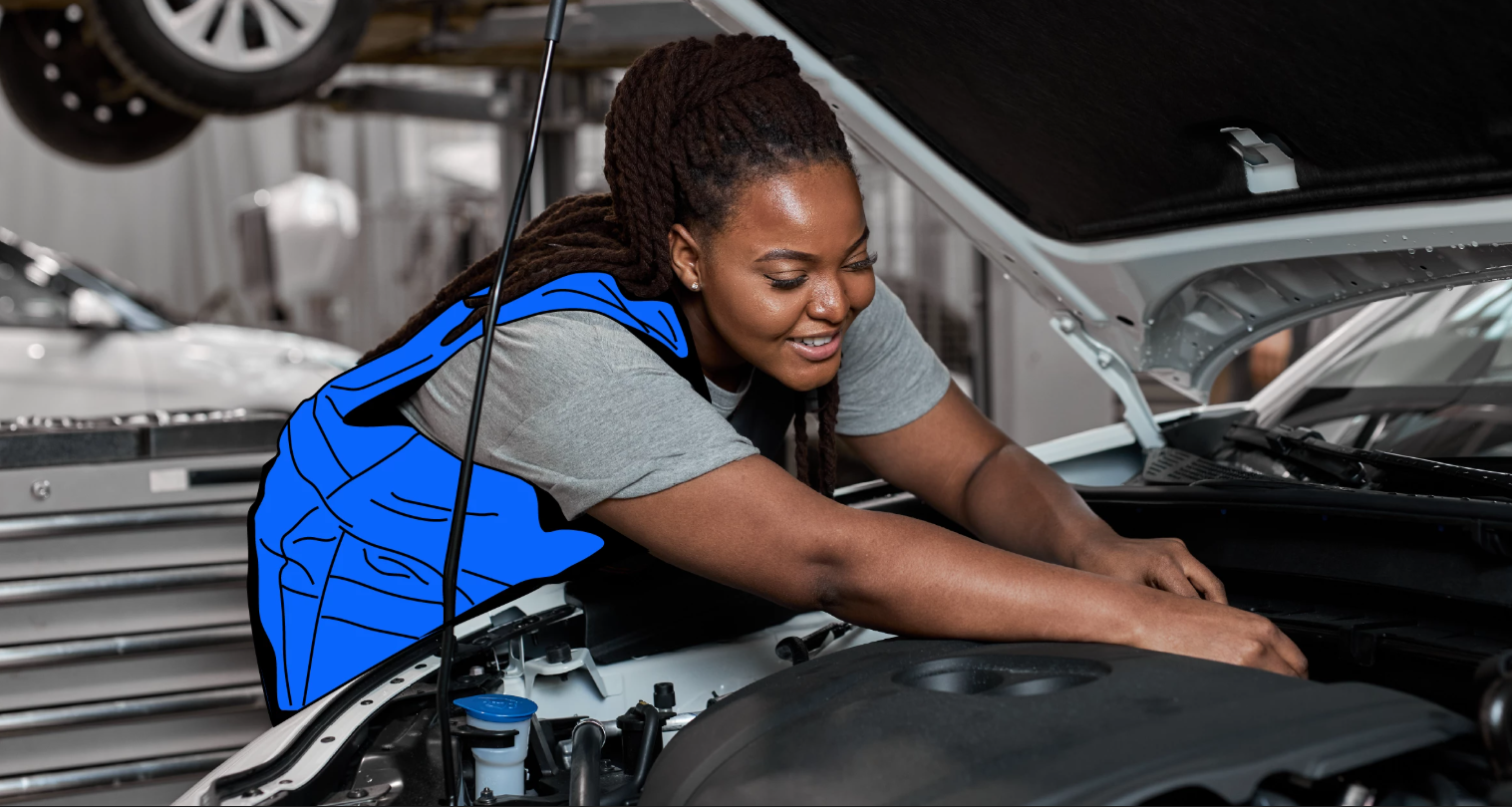A Beginner’s Guide to Navigating Auto Repair With Confidence
Introduction: Your First Mechanic Visit Doesn’t Have to Be Scary
Taking your car to a mechanic for the first time can feel intimidating—especially if you don’t know much about vehicles. The fear of being overcharged, misunderstood, or simply lost in technical jargon can be overwhelming. But here’s the good news: most mechanics want to help, not hustle. And knowing what to expect can remove much of the uncertainty.
This article walks you through every step of your first visit to a mechanic, from choosing the right shop to understanding your invoice. Whether you’re going in for a basic oil change or a more complex diagnosis, this guide will help you feel prepared, confident, and in control.
1. Choosing the Right Mechanic: Do Your Homework First
Before you even schedule your visit, take time to research and select a trustworthy repair shop.
✅ Key things to look for:
- Certifications: Look for ASE-certified technicians or AAA-approved shops.
- Reputation: Check reviews on Google, Yelp, or RepairPal.
- Specialization: Some mechanics specialize in certain brands or types of repair.
- Convenience: Is the shop close to home? Do they offer a shuttle or service?
- Communication: Are they professional and clear when you call?
Ask friends or coworkers for referrals. A strong word-of-mouth recommendation is often more valuable than online ratings alone.
2. Booking Your Appointment: Know What You Need
When you call or schedule online, be prepared to give the mechanic some basic information:
📋 Provide:
- Year, make, and model of your car
- Mileage
- Description of the issue (e.g., “There’s a knocking sound when I turn left,” or “Check engine light is on”)
- Any previous work done
- Preferred appointment times
If it’s just a maintenance visit (like an oil change or brake inspection), mention that specifically. If you’re unsure what’s wrong, it’s okay to say, “I’d like to have the car checked—I’m not sure what the issue is.”
3. Preparing for the Visit: Bring These Items
To make your first visit smooth and effective, bring the following:
📦 What to bring:
- Vehicle registration
- Driver’s license
- Maintenance records (if you have them)
- List of symptoms or concerns (you can write this down beforehand)
Also, remove valuables from your car and make sure your fuel tank has enough gas in case a road test is needed.
4. First Impressions Matter: Arriving at the Shop
🧑🔧 What to expect when you arrive:
- You’ll be greeted by a service advisor, not necessarily the mechanic.
- They’ll ask for your vehicle’s information and review the issues you’ve described.
- They may do a quick visual inspection or listen for noises while the car is idling.
- They’ll enter your concerns into a work order, which is used to track your service.
Take note of the shop’s appearance and professionalism:
- Is the lobby clean and organized?
- Are employees wearing uniforms or ID badges?
- Do they seem rushed, rude, or courteous and attentive?
First impressions are important—if you feel disrespected or uncomfortable, it’s okay to reconsider and leave before any work is done.
5. The Diagnosis Process: What Happens Behind the Scenes
Once your vehicle is checked in, the mechanic will perform a diagnosis. Depending on the issue, this can take anywhere from 30 minutes to several hours.
🛠️ Common diagnostic steps:
- Visual inspection of components (hoses, belts, brakes, etc.)
- Computer scan (OBD-II) for error codes
- Road test
- Listening for sounds or feeling for vibrations
- Lifting the car for underbody inspection
If it’s a maintenance service (like an oil change), the diagnosis is usually minimal. If it’s a performance issue (like stalling, overheating, or noises), they’ll dive deeper.
6. Getting the Estimate: Ask Questions Before You Approve
After the mechanic inspects your vehicle, the service advisor will call you or meet you to go over their findings. This is the point where transparency and communication are key.
📄 What you should receive:
- A written estimate listing the recommended repairs
- Breakdown of parts, labor, taxes, and diagnostic fees
- An explanation of what’s urgent vs. optional
- Time estimate for how long the repair will take
🧠 Smart questions to ask:
- “Can you explain why this part needs replacing?”
- “Is this urgent or can it wait?”
- “Can I see the problem myself?”
- “Are these OEM or aftermarket parts?”
- “Is there a warranty on the work?”
Never feel pressured to approve repairs on the spot. You can always ask for time to think or even get a second opinion.
7. Approving the Repair (or Not): You’re in Control
Once you’re clear on what’s needed, you can decide:
- Approve the full repair
- Approve part of it (e.g., fix the brakes now, do the suspension later)
- Decline and take the car elsewhere
If you decline service, be prepared to pay a diagnostic fee, especially if they spent time identifying the problem. This fee is usually waived if you proceed with the repair.
8. During the Repair: Communication is Key
Depending on the job, repairs can take anywhere from an hour to a couple of days. A good shop will keep you updated:
- If they find additional problems
- If the timeline changes
- If parts need to be ordered
- If costs are different than expected
You should never be surprised with a big bill after the work is done. Communication is part of professionalism.
9. Picking Up Your Vehicle: Final Steps Before You Leave
When the repair is finished, the service advisor will walk you through the completed work.
🧾 You’ll receive:
- A detailed invoice listing all parts, labor, taxes, and fees
- A copy of the work order
- Information on any warranties (parts and labor)
Before paying, ask:
- “Can you show me the replaced parts?” (optional but good for trust)
- “Is there anything else I should watch for?”
- “When should I come back for service?”
💳 Payment:
- Most shops accept credit cards, cash, and sometimes financing for larger repairs.
- Some may offer discounts for first-time customers or coupons from their website.
Once you’ve paid, they’ll return your keys, and you’re good to go.
10. After the Visit: Pay Attention and Save Your Records
Your experience doesn’t end when you drive away.
🛣️ In the days following the repair:
- Pay attention to how the car feels and sounds.
- If something seems off or the issue isn’t resolved, call the shop immediately.
- Most reputable mechanics will inspect their work and make it right if necessary.
📁 Save all paperwork:
- Keep a folder (or digital copy) of your invoice, parts warranty, and service record.
- This is useful for future repairs and can increase resale value.
11. Red Flags to Watch For
Not all mechanics are created equal. If you experience any of the following, you may want to find a new shop next time:
🚩 You were pressured into unnecessary repairs
🚩 They didn’t explain the problem clearly
🚩 Final cost was much higher than the estimate (without permission)
🚩 Poor communication or rude service
🚩 No written invoice or warranty offered
12. Building a Long-Term Relationship With Your Mechanic
Once you find a mechanic who communicates clearly, treats you with respect, and does good work—you’ve struck gold.
🤝 Ways to maintain a good relationship:
- Be polite and punctual
- Refer friends or leave positive reviews
- Stay on top of maintenance
- Communicate clearly about your needs and budget
A good mechanic can save you time, money, and stress over the life of your vehicle. They’ll get to know your car and help you plan for repairs proactively, rather than reactively.
Conclusion: Confidence Comes With Preparation
Your first visit to a mechanic doesn’t have to be stressful or confusing. When you know what to expect—from scheduling and diagnosis to payment and follow-up—you can walk in with confidence.
🧭 Quick Recap:
- Research and choose the right shop
- Communicate clearly about the issue
- Ask for written estimates and explanations
- Approve only what you’re comfortable with
- Save all paperwork and follow up if needed
The more you engage and educate yourself, the better your experience will be—not just the first time, but every time.



